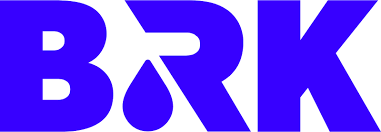BRK Ambiental
BRK Ambiental had several emissions-related problems it was trying to solve for. To implement a decarbonization strategy that aligned with business objectives, the sustainability team needed to answer.



Evaluating Decarbonization Opportunities
BRK Ambiental had several emissions-related problems it was trying to solve for. To implement a decarbonization strategy that aligned with business objectives, the sustainability team needed to answer:
- Which Mitigation Projects have the best financial and environmental performance?
- Based on the budget, how many of the top-performing Mitigation Projects can be implemented?
- What is the emissions reduction target (total abatement potential) resulting from the implementation of the best performing Mitigation Projects, allowed by the defined budget?
To answer those questions, Mitigation Projects needed to be precisely researched and modeled by multiple teams. BRK needed to rally financial, environmental, engineering, sustainability, and other teams in order to gather the relevant data and information. Another hurdle - whenever data for a mitigation project changes, the total abatement potential and abatement cost models change. Thus, mitigation and adaptation models had to be dynamic, rather than static reports.
Without having a single source of information for the projects, or effective cross-department coordination, BRK was struggling to efficiently translate data modifications into strategy updates. Precise communication and collaboration between teams is key - and BRK knew they needed a solution to consolidate this communication and strategy.
Enabling Collaboration
The SINAI platform provides BRK with a dynamic platform for multiple teams to model and update mitigation projects collaboratively. This allows the sustainability team to efficiently align targets and overall strategy with business planning.
Evaluating emissions mitigation projects
Automated cash-flow and carbon-flow models of the SINAI Climate Financial Planner Module allow BRK to model mitigation projects precisely, and according to the implementation stage they are in, to evaluate their financial and environmental impact accurately.
The Climate Financial Planner Module is a bridge between the business plan and the initial ideation of mitigation projects. It helps to develop the strategy around mitigation projects to meet the goals & budget defined in the business plan.
Identifying the Right Strategy
The automated Marginal Abatement Cost Curves provide BRK with an easy way of identifying the best performing mitigation projects, both from an ROI and abatement potential perspective. This allows the sustainability team to make optimal decisions in terms of which, and how many mitigation projects to implement to meet a certain budget and reach the highest possible abatement potential.
BRK reported that the platform helped them to make an important improvement to their strategy. Using SINAI they identified that a previous assumption they had about a certain mitigation project to be the best performing one, was actually incorrect. Instead, BRK was able to identify that another mitigation project projected a higher abatement potential and was more cost-effective.
Get The Most From Your Emission Reduction Investments With SINAI
Talk to UsOther Customer Stories
Achieve emission reduction, maximize your investment, and outpace competitors’ initiatives.


Optimus Steel partnered with SINAI to replace spreadsheet-based carbon accounting with a centralized, auditable GHG management platform. With SINAI, this transition enabled the digitization of scopes 1, 2, and 3 emissions over the last five years, and supported an inventory structure for product carbon footprint (PCF) calculations.


With SINAI, Minerva consolidated their carbon management initiatives, covering Scope 1, 2, and 3 emissions. The platform enabled bulk data uploads, advanced scenario modeling, and financial feasibility analysis. These features allowed Minerva to build a dynamic database of projects and maintain continuity in their decarbonization strategy.

.webp)
Wilson Sons, one of the leaders in maritime logistics, faces the complex challenge of decarbonizing the hard-to-abate shipping sector. With operations spanning port terminals, offshore services, and maritime towage, the company must balance evolving decarbonization goals with the technical and operational readiness of the sector. Partnering with SINAI, Wilson Sons developed a collaborative, asset-level approach to evaluate over 600 decarbonization projects. This partnership enabled the development of a reliable, cost-effective strategy to measure, monitor, and implement decarbonization initiatives, ensuring long-term sustainability and impact.
An Integrated ESG and Decarbonization Platform
Discover how SINAI’s powerful tools go beyond carbon accounting to drive actionable insights, decarbonization and compliance.








